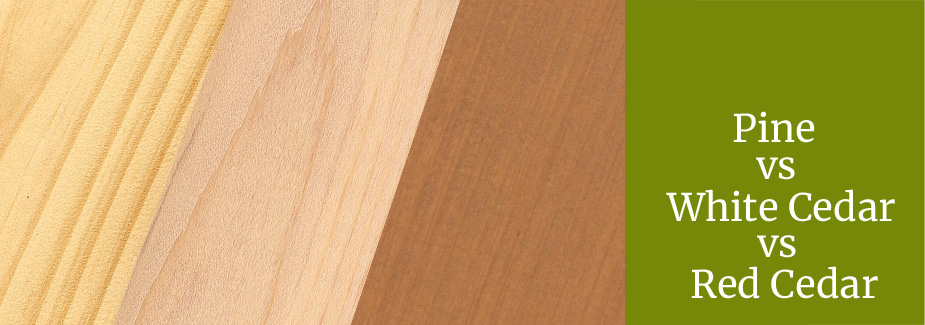
Whether you are looking for a dining set for your patio, chaise lounges for your pool, a bench for your garden or porch or for any other outdoor furniture, the natural good looks of wood make it a favorite among many home owners. If you are searching for wooden outdoor furniture that is attractive and affordable, three options stand out: red cedar, white cedar and pine. Each type of wood has its pros and cons. Here is some information from Outdoor Furniture Plus on red cedar vs. white cedar vs. pine wood for outdoor furniture to help you make the right decision.
Cedar is a smart choice, whether you are thinking about red cedar or white cedar. This aromatic, prolific North American softwood primarily grows in Canada and in the northern United States. Plentiful and affordable, cedar also boasts a distinctive scent and a close-grained, handsome look that will draw compliments.
Cedar's advantages extend beyond its appeal to the senses. Because its natural oils repel insects and just about any weather events Mother Nature can dish out, this wood is an ideal choice for outdoor furniture. Although time will reveal knots and cracks, cedar wood furniture can last 20 years or more without warping, splitting or rotting. It will resist mold, mildew and decay. As it ages, cedar's color naturally changes from an attractive light yellowish brown to a mature silver gray.
The two most common cedar species used in the U.S. for outdoor furniture are Western red cedar and Eastern white cedar. Each type of cedar is beautiful, strong and durable, perfect for most types of outdoor furniture.
Red cedar tends to exhibit a faint reddish tinge when new, while white cedar often has a creamier look. Left untreated, Western red cedar tends to be a little more durable than white cedar, although you can equalize their lifespan by using paint or stain.
Often even more affordable than cedar, pine also makes an excellent, inexpensive choice for outdoor furniture. Growing in huge quantities in North America, this abundant wood is also cultivated in many other parts of the world. That translates to a big supply that helps keep its price low.
This affordable, abundant softwood often has a creamy to yellowish-brown color. Pine wood tends to have a uniform texture and straight grain and is pleasing to look at.
Untreated pine lacks the rot resistance of cedar and is less durable. So if you opt for outdoor furniture made of untreated pine, it's wise to store it inside during the winter (or in the summer if you live in a hot, steamy climate such as Florida).
A simple way to overcome this weakness, however, is to look for pressure-treated pine. This specially treated pine can rival the durability of cedar, lasting up to 20 years or more.
No matter which of these materials you choose for your outdoor furniture, you will be delighted with the looks and comfort of red cedar, white cedar and pine products. If you have questions, call us toll-free or send us an email for helpful advice.

